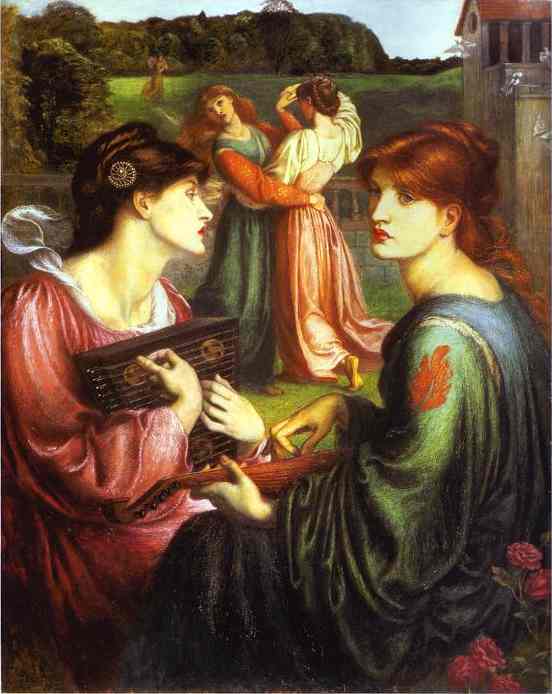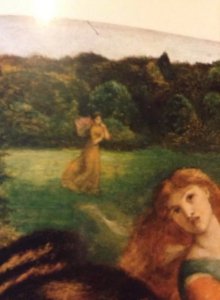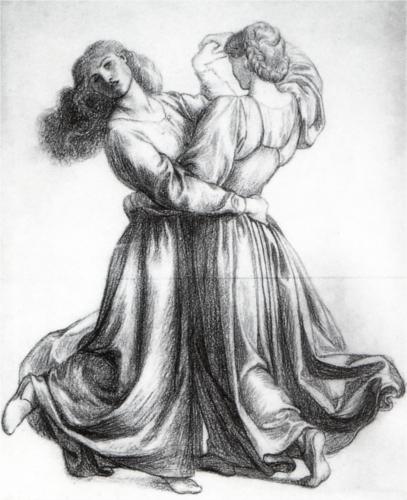Inspired by artist Dante Gabriel Rossetti’s passion for wombats, every Friday is Wombat Friday at Pre-Raphaelite Sisterhood. “The Wombat is a Joy, a Triumph, a Delight, a Madness!” – Dante Gabriel Rossetti

My sidekick Thaddeus Fern Diogenes Wombat, known as T-Dub to close friends, is quickly becoming a Rossetti aficionado.
Today we contemplate The Bower Meadow together. For me it is a work of music, calm togetherness, and contemplation. It also symbolizes balance to me. Look at their postures. The direction each woman is facing and the colors they wear create a pattern, an even proportion, that speaks to me.
Around 1850, Dante Gabriel Rossetti painted a woodland background, but never completed it. It sat in his studio for twenty years until he resurrected it and made it into the scene you see here. Model Alexa Wilding is on the right-hand side. Marie Spartali Stillman, an accomplished Pre-Raphaelite artist in her own right, is on the left. You can learn more about some of Rossetti’s frequently used models here.
For years, when I would see this piece I would focus on the women in the foreground. What’s their story?They play music and dance, yet there is a sense of sadness. Each of them looks in a different direction. They are in a group, but they seem alone. This is a painting that prioritizes mood over narrative.
Now my focus has shifted to the lone woman in the background. I could feel sorry for her but understanding the occasional need for solitude, maybe she is exactly where she wants to be. Not participating with the group, but close enough to hear the music. Perhaps it is the music she seeks.
Music is a catalyst. It evokes an intense emotional response. In Rossetti’s day, before recordings, it was an experience the listener had to be present for. So, in painting The Bower Meadow he is not merely painting beautiful women, he is capturing a moment. The musicians perform their art, the listeners respond physically with dance and the woman in the distance is the only witness to this exchange. Except for ourselves,of course, on the other side of the canvas.



